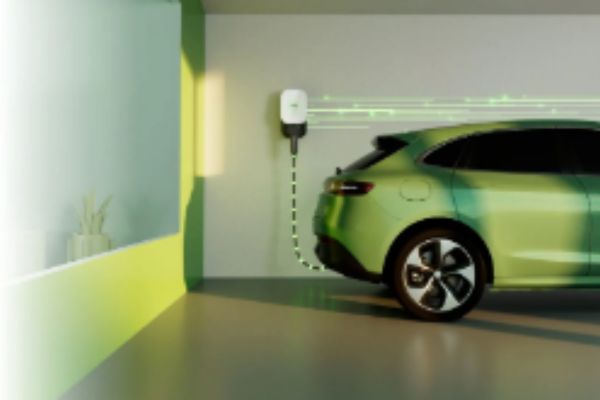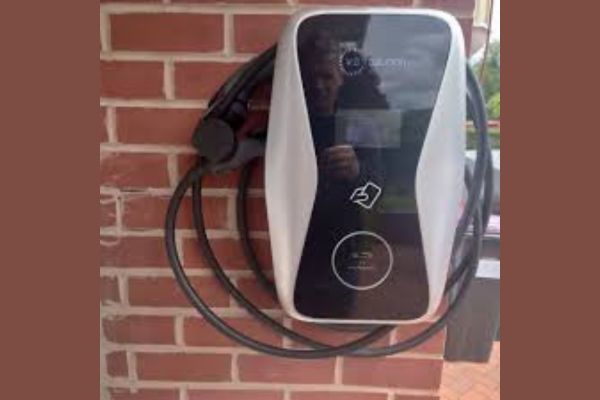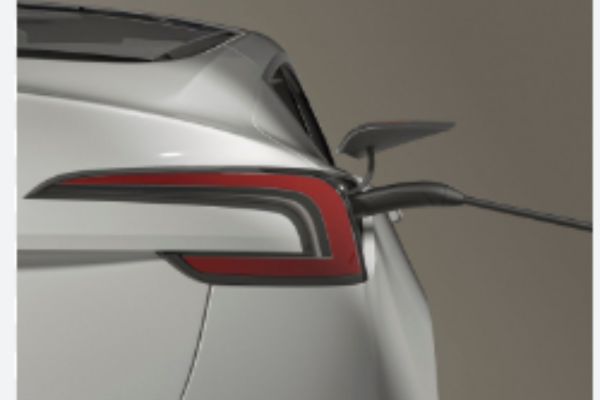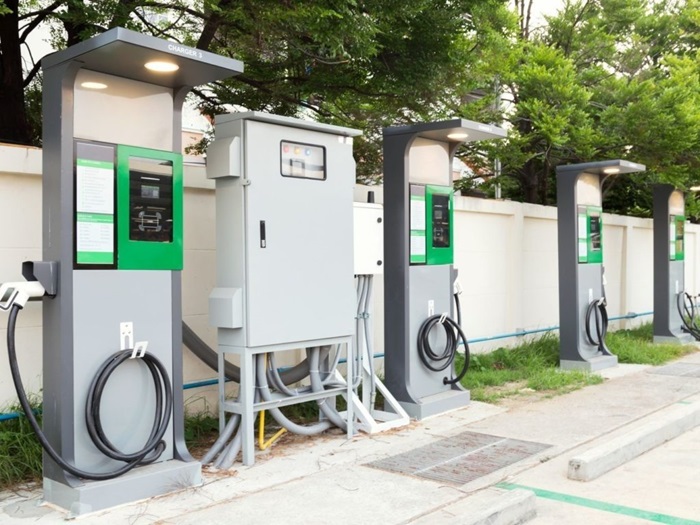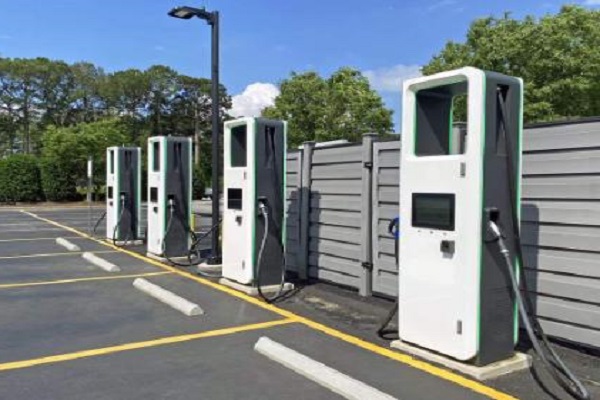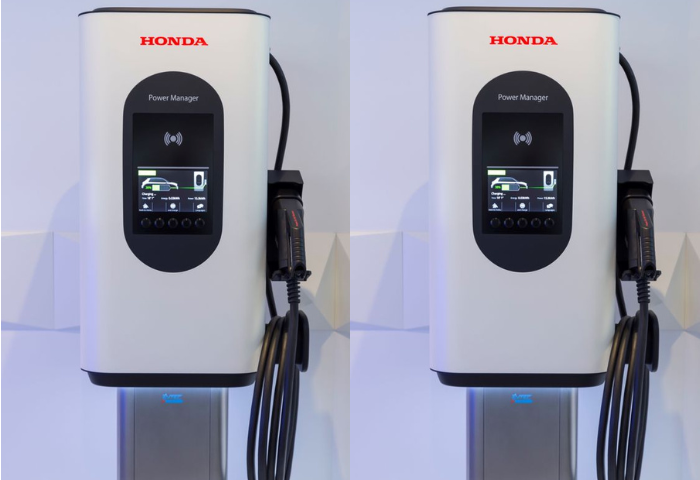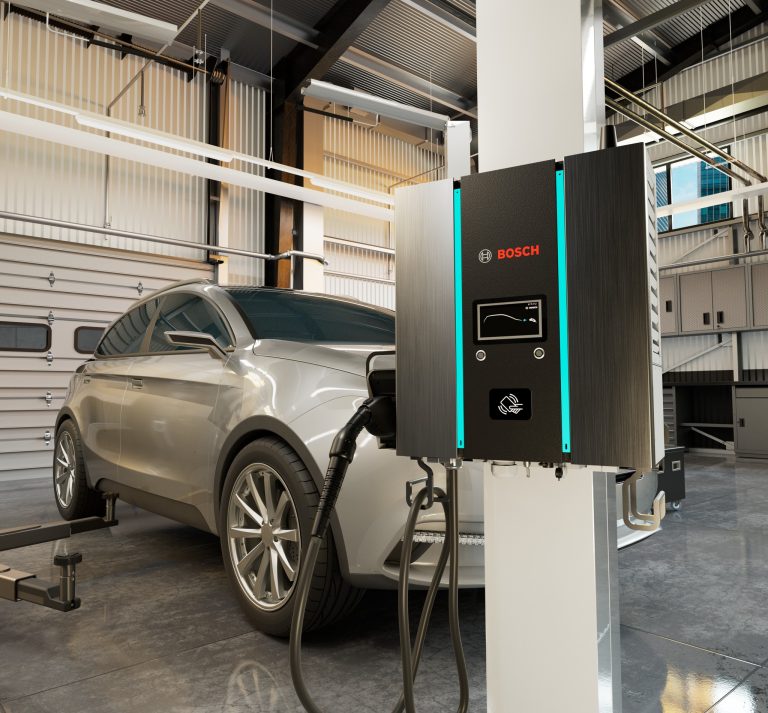Advancing EV Charging Technology: A Look into Huawei’s Innovations
The Huawei Smart EV Charger is revolutionizing the electric vehicle charging experience with its cutting-edge technology and user-friendly design. Combining efficiency and innovation, this charger ensures fast and reliable power delivery to EVs, making it an essential addition for modern households and businesses. With advanced features such as remote monitoring and intelligent power distribution, the Huawei Smart EV Charger is setting new standards in the EV charging industry.
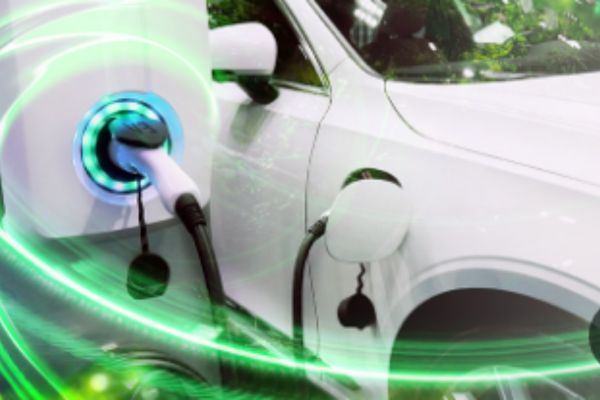
Introduction
In the pursuit of sustainable transportation solutions, the convergence of electric vehicles (EVs) and renewable energy sources stands as a beacon of progress. Among the pioneers in this realm, Huawei has emerged with groundbreaking innovations, particularly in EV charging technology. This discourse aims to delve into the features and benefits of Huawei’s Smart EV Charger while also emphasizing the crucial role of integrating solar energy within EV charging solutions.
Huawei’s Smart EV Charger represents a paradigm shift in the EV charging landscape. Leveraging cutting-edge technology, it offers a myriad of features designed to optimize the charging experience for both users and infrastructure operators. From intelligent charging management to seamless connectivity, Huawei’s solution redefines convenience and efficiency in EV charging.
One of the standout features of Huawei’s Smart EV Charger is its adaptability and scalability. Equipped with advanced algorithms and AI capabilities, the charger intelligently adjusts charging parameters based on factors such as grid load, energy demand, and user preferences. This dynamic optimization not only ensures faster charging times but also minimizes strain on the electrical grid, paving the way for widespread EV adoption without overburdening existing infrastructure.
Furthermore, Huawei’s solution prioritizes user convenience through seamless integration with mobile applications and cloud-based platforms. Through intuitive interfaces and remote management capabilities, users can effortlessly schedule charging sessions, monitor energy consumption, and receive real-time updates on charging status. Such accessibility not only enhances the user experience but also fosters greater transparency and control over energy usage.
Beyond its technological prowess, Huawei’s Smart EV Charger underscores the importance of sustainability by integrating solar energy into the charging ecosystem. By harnessing the power of the sun, EV charging becomes not only more environmentally friendly but also economically viable. Solar integration reduces reliance on fossil fuels, mitigates carbon emissions, and contributes to the overall resilience of the energy infrastructure.
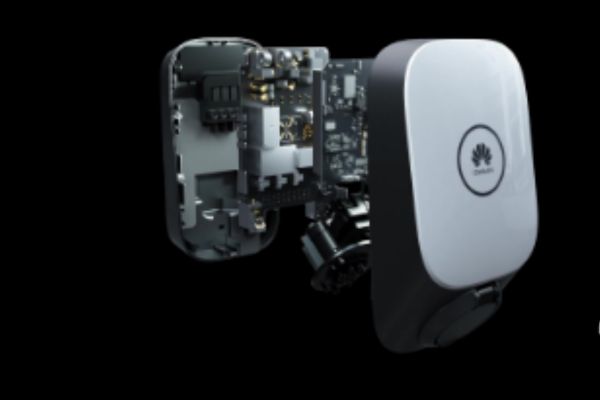
Product Overview and Features
Model Specifications
Huawei’s Smart EV Charger lineup includes two flagship models: the SCharger-7KS-S0 and the 22KT-S0. Huawei designed both models to deliver exceptional performance and versatility in EV charging.
SCharger-7KS-S0:
- This model is ideal for residential and small-scale commercial applications.
- It features a maximum charging power of 7 kW, making it suitable for a wide range of EVs.
- The compact design ensures space efficiency and easy installation in diverse settings.
- It supports multiple authentication modes for enhanced security and user management.
22KT-S0:
- The product is designed for high-demand environments such as public charging stations and fleet operations.
- It has a maximum charging power of 22 kW, which allows EVs with larger battery capacities to charge quickly.
- The device is equipped with advanced power management capabilities to optimize charging efficiency and grid integration.
- The system offers seamless connectivity and integration with Huawei’s FusionSolar app for comprehensive monitoring and control.
Drive with Sun Power
Integrating solar energy into EV charging solutions offers a multitude of benefits and efficiencies. By harnessing the power of the sun, EV owners can significantly reduce their reliance on grid electricity and lower their carbon footprint. Solar integration also provides a reliable and sustainable source of energy, particularly in regions with ample sunlight. Additionally, it offers cost savings over the long term by reducing electricity expenses associated with charging EVs.
Fast and easy installation
Huawei engineers their Smart EV chargers to ensure a quick and hassle-free installation process. Huawei’s Smart EV Chargers offer intuitive mounting options and plug-and-play functionality, enabling installation in a matter of hours, thereby minimizing downtime and disruption to operations. The streamlined process guarantees the rapid and efficient deployment of EV charging infrastructure, thereby speeding up the adoption of electric vehicles.
The preferred mode for PV power and dynamic charging
Huawei’s Smart EV Chargers feature innovative power management capabilities, including PV Power Preferred Mode and Dynamic Charging. PV Power Preferred Mode prioritizes solar energy utilization during charging, maximizing the use of renewable resources and reducing grid dependency.
Dynamic charging rates are adjusted in real time based on factors such as solar availability, grid load, and user preferences, ensuring optimal efficiency while avoiding overloading and grid congestion.
Multiple Authentication Modes
Security is paramount in EV charging infrastructure, and Huawei’s Smart EV Chargers offer multiple authentication modes to ensure safe and secure operation. From RFID cards to mobile app authentication, users have the flexibility to choose the authentication method that best suits their needs. Additionally, advanced encryption protocols and cybersecurity measures safeguard against unauthorized access and protect user data.
Comprehensive app integration
The FusionSolar app serves as a central hub for monitoring and managing Huawei’s smart EV chargers. With intuitive interfaces and real-time data visualization, users can remotely monitor charging sessions, track energy consumption, and receive alerts and notifications. The app also enables seamless integration with smart home systems and energy management platforms, providing enhanced control and optimization capabilities.
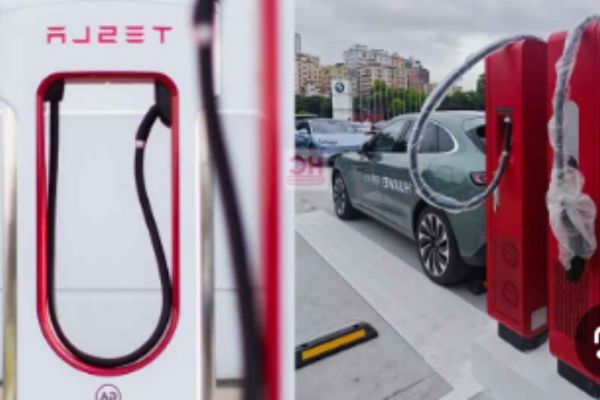
User Experience
Ease of Use
Both in terms of hardware and software, Huawei designed its Smart EV Chargers with user convenience and accessibility in mind.
Hardware Interface:
- Intuitive Design: The physical interface of the chargers is user-friendly, featuring clear indicators and an easy-to-read display. This makes it simple for users to initiate and monitor the charging process.
- Plug-and-Play Operation: Users can effortlessly connect their EVs and start charging with minimal steps. The chargers support standard connectors, ensuring compatibility with a wide range of electric vehicles.
Software Interface:
The FusionSolar App provides a comprehensive and intuitive platform for managing charging sessions. The app allows users to:
- To take advantage of lower electricity rates or align with solar energy availability, schedule charging sessions.
- Monitor the real-time charging status, including power usage and remaining charging time.
- Receive notifications and alerts about charging progress or any issues.
User-Friendly Navigation: We designed the app’s interface to be intuitive, offering easy navigation and clear, graphical representations of data. This ensures users of all technical skill levels can effectively manage their charging needs.
Customer reviews and testimonials
Real-world feedback highlights the practical benefits and high satisfaction levels associated with Huawei’s Smart EV chargers.
John M., Residential User:
“Installing the SCharger-7KS-S0 at home was incredibly straightforward. The installation took just a couple of hours, and the app walked me through the setup process seamlessly. The ability to prioritize solar power has significantly reduced my electricity bills.”
Sarah T., Fleet Manager:
“The 22KT-S0 has been a game-changer for our electric fleet. The dynamic charging feature ensures our vehicles are ready to go quickly without putting too much load on our building’s electrical system. The app’s monitoring capabilities are fantastic; I can track each vehicle’s charging status in real time.”
David R., Public Charging Station Owner:
“We’ve installed several Huawei chargers at our public stations, and the feedback from users has been overwhelmingly positive. People appreciate the multiple authentication options and the reliable, fast charging. Plus, the hardware is robust and visually appealing.”
Emily S. is an environmental enthusiast.
“As someone committed to sustainability, the integration of solar energy with Huawei’s chargers is a major plus. Knowing that the sun powers my car makes me feel good about my contribution to reducing emissions. The FusionSolar app makes it easy to manage everything from my phone.”
These testimonials reflect broad satisfaction with the ease of use, reliability, and advanced features of Huawei’s Smart EV chargers. The combination of user-friendly design, seamless app integration, and efficient charging capabilities ensures a positive experience for a wide range of users, from individual homeowners to fleet managers and public charging station operators.
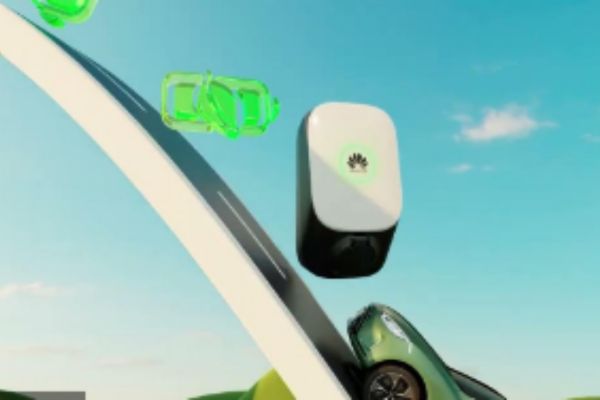
Technical specifications and support
Detailed technical specifications
| Feature | SCharger-7KS-S0 | SCharger-22KT-S0 |
| Charging Power | Up to 7 kW | Up to 22 kW |
| Input Voltage | 220V-240V AC, 50/60Hz | 400V AC, 50/60Hz (three-phase) |
| Connector Type | Type 2 (IEC 62196-2) | Type 2 (IEC 62196-2) |
| Cable Length | 5 meters (customizable) | 5 meters (customizable) |
| Dimensions (L x W x H) | 350 x 250 x 120 mm | 450 x 300 x 150 mm |
| Weight | 6 kg | 8 kg |
| Operating Temperature | -30 °C to +55 °C | -30 °C to +55 °C |
| Protection Rating | IP65 (dust-tight and water jets) | IP65 (dust-tight and water jets) |
| Safety Standards | IEC 61851-1, IEC 61851-22 | IEC 61851-1, IEC 61851-22 |
| Communication Protocols | OCPP 1.6 JSON, Wi-Fi, Ethernet | OCPP 1.6 JSON, Wi-Fi, Ethernet |
User Guide and Support
Instructions for use:
Installation:
- Make sure a certified electrician installs the charger.
- Mount the unit on a stable surface, using the provided brackets and screws.
- Connect the charger to the electrical supply according to local regulations and safety standards.
- Verify the installation with initial power-on and diagnostics.
Charging Process:
- Connect the charging cable to your EV.
- Use the FusionSolar app or RFID card to authenticate and start the charging session.
- The app or the LED indicators on the charger.
- Disconnect the cable once charging is complete.
Solar Integration:
- Through the FusionSolar app, configure the PV Power Preferred Mode.
- Verify the correct connection and power generation of your solar PV system.
- During the charging process, the charger will prioritize solar energy.
Troubleshooting:
- Check the main power supply and circuit breaker.
- Ensure all cables are securely connected.
- Refer to the LED indicators for error codes.
Charging Stops Unexpectedly:
- Make sure you’ve connected the EV correctly.
- Check the FusionSolar app for notifications or error messages.
- Ensure there are no obstructions or damages to the charging cable.
Authentication Issues:
- Verify the registration of your RFID card or mobile device.
- Restart the FusionSolar app and try again.
- Check for firmware updates that might resolve connectivity issues.
Technical support resources:
- Each unit comes with a comprehensive user manual that details installation, operation, and maintenance procedures. It is also available for download on Huawei’s official website.
- Online Support: Access a wealth of resources, including FAQs, troubleshooting guides, and video tutorials, at Huawei’s support portal.
- Huawei provides dedicated customer service via phone and email. Support representatives are available to assist with technical issues, warranty claims, and general inquiries.
- Professional Installation and Maintenance Services: Huawei-certified partners provide professional installation and maintenance services to ensure that the chargers perform optimally and last a long time.
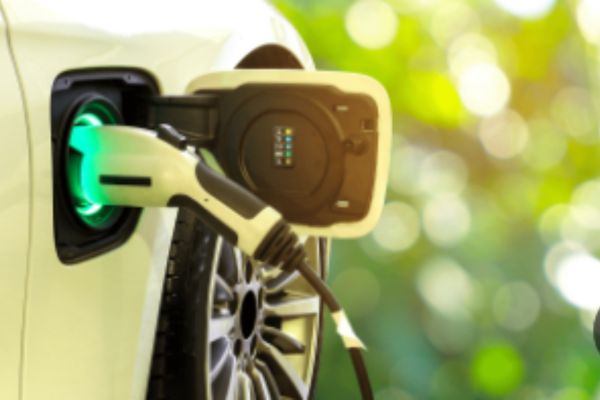
Additional features and benefits
Advanced technological features
Huawei’s Smart EV Chargers incorporate several technological advancements that set them apart in the market:
AI-Driven Charging Optimization: Utilizes artificial intelligence to analyze and adjust charging parameters based on real-time data from the grid and the EV, ensuring efficient and balanced charging.
Smart Load Management: This feature prevents overloading the electrical system by dynamically adjusting the charging power based on household consumption patterns and grid availability.
Energy Efficiency: High-efficiency power conversion technology reduces energy loss during charging, making the process more sustainable and cost-effective.
Cloud Connectivity: Integration with cloud-based services allows for remote monitoring, firmware updates, and diagnostic checks, ensuring that the charger is always operating with the latest features and security patches.
Integration with Home Energy Systems
Huawei has designed its Smart EV Chargers to seamlessly integrate with broader home energy systems, thereby enhancing overall energy management and sustainability.
FusionSolar Smart PV Management System: Homeowners can monitor and manage solar energy generation and consumption alongside their EV charging by integrating the chargers with Huawei’s FusionSolar Smart PV management system.
Home Energy Storage: Compatible with home energy storage solutions, it enables users to store excess solar energy and use it for EV charging during non-sunny periods, maximizing the use of renewable energy.
Connecting to smart home systems enables users to automate charging schedules based on electricity tariffs, solar energy availability, and personal preferences, all from a single platform.
Weather Resistance
Huawei builds its Smart EV Chargers to withstand a variety of environmental conditions, ensuring durability and dependable performance.
IP65 Protection Rating: Both the SCharger-7KS-S0 and 22KT-S0 models have an IP65 rating, meaning they are dust-tight and protected against water jets from any direction, making them suitable for outdoor installation.
Wide Operating Temperature Range: Designed to operate efficiently in temperatures ranging from -30°C to +55°C, ensuring reliability in extreme weather conditions.
Robust Build: Constructed with high-quality materials that resist corrosion and physical wear, providing long-term durability even in harsh environments.
Warranty and support services
Huawei offers comprehensive warranty and support services to ensure customer satisfaction and peace of mind.
Warranty Coverage:
The Smart EV Chargers come with a standard 5-year warranty, covering any defects in materials or workmanship. Extended warranty options are available for additional coverage.
Customer Support:
- Dedicated customer support is available via phone, email, and online chat, providing prompt assistance for any technical issues or inquiries.
- You have access to an extensive online support portal featuring FAQs, troubleshooting guides, video tutorials, and user manuals.
Professional Services:
- Huawei-certified partners offer professional installation and maintenance services to ensure that the chargers are installed correctly and maintained for optimal performance.
- We provide regular software and firmware updates to enhance functionality and security over time.
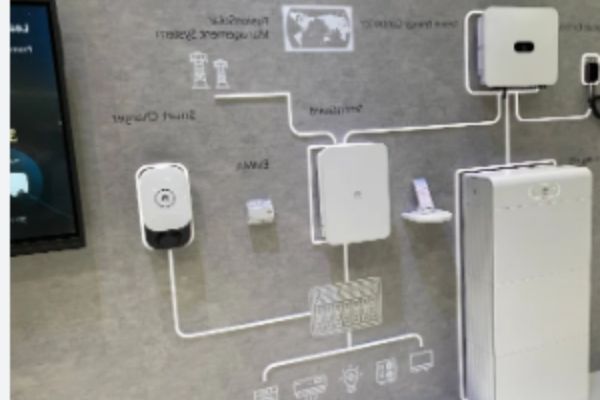
Economic and environmental considerations
Cost efficiency and ROI
Initial Investment: While the initial cost of installing Huawei’s Smart EV chargers might be higher compared to basic chargers, the advanced features and integration capabilities offer significant long-term savings.
Energy savings: The integration with solar power allows users to harness renewable energy, significantly reducing electricity costs associated with EV charging. Over time, this can lead to substantial savings, especially in areas with high solar potential.
Increased efficiency: High-efficiency power conversion and smart load management reduce energy waste, further lowering operational costs.
Return on Investment (ROI): The combination of energy savings, lower maintenance costs due to durable design, and potential government incentives for using renewable energy can result in a favorable ROI within a few years.
Eco-Friendly Materials and Regulatory Compliance
Sustainable Materials: Huawei is committed to using eco-friendly materials in the production of their EV chargers. This includes the use of recyclable and non-toxic materials wherever possible, reducing environmental impact.
Regulatory Compliance: Huawei’s Smart EV Chargers comply with international safety and environmental standards, such as IEC 61851 for safety in EV charging systems and RoHS (Restriction of Hazardous Substances) directives, ensuring minimal environmental harm.
Reduced Carbon Footprint: By enabling the use of solar energy and improving energy efficiency, these chargers help reduce the carbon footprint associated with EV charging, contributing to broader environmental goals.
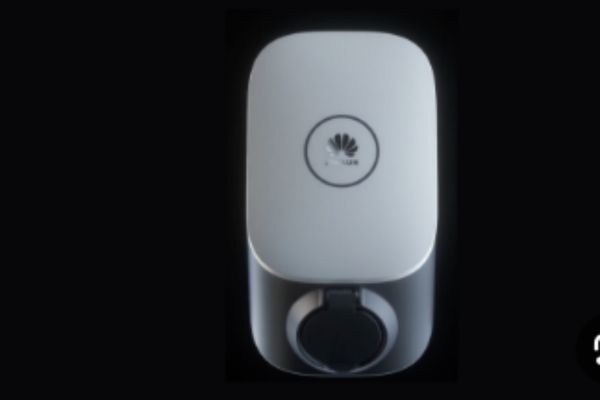
Future developments and innovations
upcoming features and models
Enhanced Connectivity: Future models are expected to feature enhanced connectivity options, including 5G integration, to provide even faster and more reliable communication between the charger and the user’s smart devices.
Huawei is developing bi-directional charging technology, which will allow EVs to not only draw power from the grid but also feed energy back into the grid or home energy system, supporting grid stability and providing additional energy storage solutions.
Higher Power Models: The latest EV models with larger battery capacities are expected to offer higher power outputs to support faster charging.
Research and development
Ongoing Innovation: Huawei continues to invest heavily in research and development to stay at the forefront of EV charging technology. This includes exploring new materials, improving energy efficiency, and developing smarter AI-driven management systems.
Collaborations and Partnerships: Huawei collaborates with leading research institutions, automotive manufacturers, and energy companies to foster innovation and ensure their products meet evolving market needs and regulatory requirements.
Sustainability Initiatives: From the production process to the end-of-life recycling programs, the company is committed to improving the sustainability of its products, ensuring a minimal environmental impact throughout the product lifecycle.
The article presents case studies and a comparative analysis of the Pulsar Plus Smart EV Charger.
Real-World Implementations
| Case Study | Location | Details | Impact |
| Residential Use | Suburban Home, California | A family of four has two electric vehicles. Their home automation system integrated the charger. | We have reduced the charging time by 30% and improved energy cost management by using off-peak charging. |
| Commercial Fleet | Small Business, Florida | A delivery company equipped its facility with several Pulsar Plus chargers to manage a fleet of 20 electric vans. | Fast and reliable charging has improved fleet operational efficiency and significantly decreased downtime. |
Comparative Analysis: Pulsar Plus vs. Huawei Charger
Features Comparison
- Smart Features: Both chargers provide app-based control and monitoring. However, the Pulsar Plus additionally supports integration with home automation systems like Alexa and Google Home, which provides enhanced usability and convenience.
- Charging Speed: The Pulsar Plus delivers up to 48 amps of power, making it suitable for faster charging compared to Huawei’s standard model, which typically offers up to 40 amps.
- Both models include standard safety features such as overcurrent protection and temperature monitoring. However, the Pulsar Plus has an edge with its UL certification, indicating rigorous safety testing.
Performance Comparison
- Reliability: With the Pulsar Plus, users report high reliability and lower maintenance needs, possibly due to its robust construction and advanced safety protocols.
- User Satisfaction: In terms of user feedback, the Pulsar Plus tends to have higher satisfaction ratings, particularly regarding its user interface and the responsiveness of customer support.
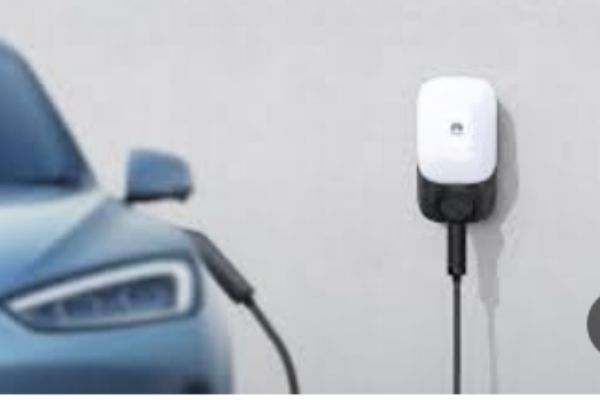
Conclusion
Conclusion and Call to Action
The insights gained from the case studies and comparative analysis underline the significant advantages of incorporating the Pulsar Plus Smart EV Charger in both residential and commercial settings. However, for those considering a range of options, Huawei’s chargers also present compelling benefits worth exploring.
Huawei’s commitment to integrating cutting-edge technology, economic efficiency, and environmental sustainability makes its chargers an excellent choice for the discerning consumer. Whether you’re managing a large fleet or seeking an effective home charging solution, Huawei offers reliable, technologically advanced products that cater to diverse needs.
A Vision for the Future
Looking forward, the evolution of electric vehicle (EV) charging infrastructure is pivotal in the transition towards sustainable transportation. Huawei is poised to make a significant contribution to this transformation by pushing the boundaries of charger technology and connectivity. With ongoing advancements in fast charging, energy management, and smart grid integration, Huawei aims to enhance the user experience while minimizing the ecological footprint of EVs.
The adoption of cutting-edge charging options like those Huawei provides will be crucial in promoting increased EV usage, lowering carbon emissions, and achieving global environmental goals as we move towards a more sustainable future. Let’s embrace these technological advancements to power a cleaner, greener tomorrow.

Henry Michael is a leading expert in EV charging station research, specializing in innovative solutions for electric vehicle infrastructure. With a passion for sustainability and technological advancement, he is dedicated to advancing the accessibility and efficiency of EV charging worldwide.

